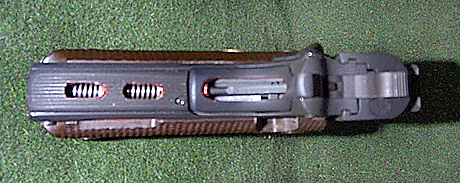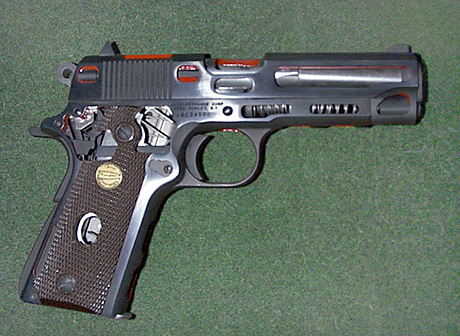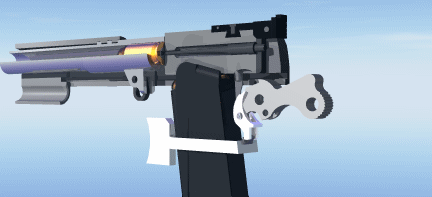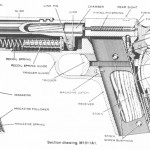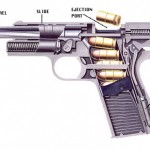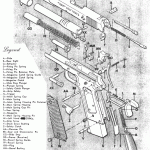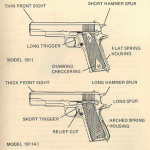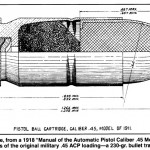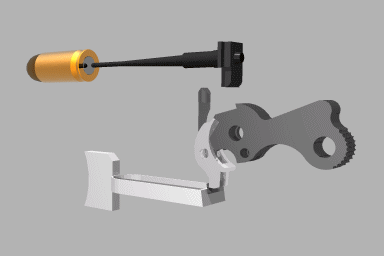Soldiers
- Sgt. Alvin York
- 2nd Lt. Frank Luke, Jr.
- Marine Sgt. Al Schmid
- Gunnery Sgt. John Basilone
- MSG Ernest R. Kouma
- 1st Lt. John M. McGovern
- 2nd Lt. Owen Bagget
- Lt. Walt Hagan
- MG Sheffield Banta
- Maj. Charles W. Davis
- Cpl. Dan D. Schoonover
- Sgt. Darrell Samuel Cole
- Master Sgt. Gary I. Gordon
- Cpt. Harold A. Fritz
- 1st Lt. Harry Linn Martin
- Cpl. Henry F. Warner
- Pfc. Jack G. Hanson
- 2nd Lt. John J. McGinty III
- 2nd Lt. Patrick Regan
- Sgt. Randall D. Shughart
- Robert D. Maxwell
- Robert Eugene Bush
- Lt. Col. Robert G. Cole
- Sgt. Thomas A. Baker
- 1st Lt. William B. Turner
- Lt. Col. William J. O’Brien
- 1st Lt. Willibald C. Bianchi
- Dwight H. Johnson
- John E. Holbrook
- Petty Officer R. J. Thomas
Lawmen
- Billy M.
- Sheriff Jim Wilson
- Texas Ranger Joaquin Jackson
- R. A. Crowder, Ranger Chief
- Texas Ranger Charlie Miller
Bad Guys and Gals
- John Dillinger
- The Death of Bonnie and Clyde
- The Death of Pretty Boy Floyd
- The Capture of Machine Gun Kelly
Other Stories
On the morning of 8 October 1918, elements of the 328th Infantry, 82nd Division, United States Army, were pinned down by German machine-gun fire. Seventeen men, under the command of Sgt. Bernard Early, were ordered to out-flank the machine guns.
Shortly after they left their own lines, they came across a German officer and several soldiers having breakfast. Believing that they were surrounded, the Germans surrendered. However, before Early could detach a man to take the prisoners back through the lines, intensive machine gun fire swept the patrol. Eight American soldiers survived. Sgt. Early was killed. As the remaining non-com, Cpl. Alvin York took command of the patrol. While the remaining Americans covered their prisoners, trying at the same time to avoid enemy fire, York spotted the location of the German guns, about 30 yards away. In addition to his Enfield M1917 rifle, he also carried a Colt .45 automatic pistol. The German gunners peeked over the tops of their Maxim guns to avoid hitting their own men.
With the appearance of each face, framed in its “coal-scuttle” helmet, York’s Enfield spoke. One shot equaled one dead gunner. York was from the Tennessee mountains where firearms were used to put food on the table. Mountain folk were frugal, making each shot count.
Unnoticed by York, several Germans moved forward, locating York’s position. Out of sight, they counted the shots from York’s rifle, establishing the pattern of his shooting. They counted a series of 5 shots from his Enfield and rushed York to gain the advantage of the few extra seconds it took to reload the rifle.
As the Germans charged, they came into easy pistol range. York brought the .45 automatic into action, stopping the patrol in its tracks. He continued shooting and advancing, killing a total of 25 German soldiers and capturing 132 by himself. York was promoted to Sergeant and awarded the Congressional Medal of Honor.
Second Lieutenant Frank Luke, Jr.
On 29 September 1918, Second Lieutenant Frank Luke, Jr., of the United States Army’s 27th Aero Squadron, flew over an American balloon squadron dropping a note, “Watch for burning (German) balloons” just beyond the German lines. As predicted, observers saw the three explosions of three balloons. Luke did not return. It was not until after the war that a grave’s registration unit learned the conclusion of Luke’s “3-kill” attack.
After destroying the third balloon, Luke was wounded and his Spad was so shot-up that he could barely control it. Nevertheless, he maneuvered his airplane to strafe German infantry columns. He crash-landed and was immediately surrounded by Germans. Rather than surrender, he drew his .45 automatic pistol and started firing at the Germans. They returned his fire, killing Luke immediately. Frank Luke was awarded the Congressional Medal of Honor posthumously.
Billy M.
In the town in Texas where I was born, they tell the story of a deputy named Billy M.who had recently returned from a combat tour in the South Pacific with the Marines. He was escorting a prisoner from the courthouse to the jail when the prisoner, who was in handcuffs, knocked Billy to the ground and dived onto the prone deputy with the intent of braining him with the handcuffs. Billy twisted around, drew his Colt Government and fired. It is said that the round lifted the prisoner up in the air, and he was quite dead by the time he hit the ground. My dad was a police officer for a while and served with Billy, so the tale comes from fairly reliable sources.
Gunnery Sergeant John Basilone
In 1942, on a black October night in the steaming jungles of Guadalcanal, Gunnery Sergeant John Basilone single-handedly wiped out a company of Japanese trying to overrun his position on the Tenaru River. With a Colt .45 pistol and two machine guns – one cradled in his arms after the other was knocked out – he stopped a screaming banzai attack and held out until dawn, when reinforcements came up. Nearly a hundred sprawled enemy dead were around his cut-off outpost. Basilone became the second Leatherneck to be awarded the Medal of Honor in World War II.
Earnest R. Kouma, MSG (then sfg) U.S. Army, Co. A, 72d Tank Battalion. Vicinity of Agok, Korea, 31 August & Sept 1 1950.
Citation: Sgt. Kouma, a tank commander in Co. A distinguished himself by conspicuous gallantry and intrepidity at the risk of his life above and beyond the call of duty in action against the enemy. His unit was engaged in supporting infantry elements on the Naktong River Front. Near midnight on 31 August, a hostile force estimated at 500 crossed the river and launched a fierce attack against the infantry positions, inflicting heavy casualties…..Sgt. Kouma discovered that his tank was the only obstacle in the path of the hostile onslaught. Holding his ground, he gave fire orders to his crew and remained in position throughout the night, fighting off repeated enemy attacks. During one fierce assault, the enemy surrounded his tank and he leaped from the armored turret, exposing himself to a hail of hostile fire, manned the .50 caliber machine gun mounted on the rear deck and delivered pointblank fire into the fanatical foe. His machine gun emptied, he fired his pistol [1911-A1] and threw grenades to keep the enemy from his tank. After more than 9 hours of constant combat and close-in fighting , he withdrew his vehicle to friendly lines. During the withdrawal through 8 miles of hostile territory, Sgt. Kouma continued to inflict casualties upon the enemy and exhausted his ammunition in destroying 3 hostile machinegun positions. During this action Sgt. Kouma killed an estimated 250 enemy soldiers. His magnificent stand allowed the infantry sufficient time to reestablish defensive positions. Rejoining his company, although suffering intensely from his wounds, he attempted to re-supply his tank and return to the battle area. While being evacuated for medical treatment, his courage was again displayed when he requested to return to the front….
From The Congressional Medal of Honor, the Names, the Deed published by Sharp and Dunnigan.
Marine Sergeant Al Schmid
Schmid boarded the troop transport George F. Elliot as part of the 11th Machine Gun Squad, Company H, 2nd Battalion, 1st Regiment, 1st Marine Division. On August 7, 1942, the 10,000 men of the 1st Marine Division, under Maj. Gen. Alexander Archer Vandegrift, the largest Marine force ever engaged in landing operations up to that time, assaulted Guadalcanal, beginning the first American offensive against the Japanese.
The Marines had expected a counterattack the moment they landed, but encountered no real opposition during their first two weeks. Then the Japanese sent a crack army regiment commanded by Colonel Kiyono Ichiki from Rabaul to retake Guadalcanal. Ichiki landed his elite troops on Guadalcanal on August 18, then marched west toward Marine positions along the Ilu River (mismarked on the American maps as the Tenaru). Lieutenant Colonel Edwin Pollock’s 2nd Marine Battalion was waiting.
H Company’s machine-gun squad was there also. Schmid and two other Marines, Corporal Leroy Diamond and Pfc John Rivers, manned a .30-caliber water-cooled machine gun inside a sandbag-and-log emplacement camouflaged with palm fronds and jungle greenery. The position was on the west bank of the Ilu, which was 50 yards wide at that point.
At 3 a.m., August 21, 1942, Ichiki, confident of victory, attacked by the sickly green light of flares. The Japanese yelled, jabbered and fired machine guns, trying to force the Marines to reveal their positions. The Marines held their fire.
Across the river from their nest, Schmid saw a dark, bobbing mass at the edge of the water. “It looked like a herd of cattle coming down to drink,” he remembered. Fifty Japanese crossed the river yelling, “Marine, tonight you die,” and “Banzai,” firing their rifles as they came.
Johnny Rivers opened up on them, and the mass broke up. Screams of rage and pain came from the other side as the Japanese concentrated everything they had on Schmid’s position and on another machine-gun position 150 yards downstream. Bullets whined past the Marines’ heads, throwing mud and wood chips around them. Schmid’s heart pounded rapidly.
The machine gun on their right stopped firing, put out of action. Then a dozen bullets tore into Rivers’ face, killing him. His finger froze on the trigger, sending 200 rounds into the darkness. Cold rage rising in him, Schmid shoved Rivers’ body out of the way and took over the gun. Corporal Diamond got in position to load it for him.
Every time Schmid raked the attacking Japanese he heard them yelling as bullets ripped into them. He heard one particular Japanese officer “screeching and barking commands at the others; he had a nasty shrill voice that stood out over the others.” Schmid fired a burst at the voice, but failed to silence it. It would haunt him for years.
Diamond then was hit in the arm, the bullet knocking him partially across Schmid’s feet. He could not load anymore, but while Schmid fired the gun, Diamond stood beside him, spotting targets. Schmid would fire across the river to the left, feel Diamond hitting him hard on the arm and pointing to the right, swing the gun and hear Japanese yelling as his bullets hit them.
Schmid now was both loading and firing the machine gun. When he got close to the end of a 300-round belt of ammunition, Diamond would punch his arm. Schmid would fire a burst, rip open the magazine, insert a new belt and resume firing. At one point a Japanese soldier put a string of bullets through the .30 caliber’s water jacket. Water spurted over Schmid’s lap and chest; the gun crackled and overheated but did not jam.
Schmid continued loading and firing the machine gun for more than four hours, with and without help. Somehow a Japanese soldier got through the body-choked stream and got close enough to throw a hand grenade into Schmid’s position.
“There was a blinding flash and explosion,” Schmid recalled. “My helmet was knocked off. Something struck me in the face.” When he put his hand up, all he felt was blood and raw flesh. Then he felt pain in his left shoulder, arm and hand. He could see nothing. He collapsed on his back in the nest. “They got me in the eyes,” he muttered to Diamond, who lay beside him.
The Japanese were still pouring bullets into the machine-gun position; Schmid reached around to his holster and took out his .45. Diamond heard him fussing with it and yelled, “Don’t do it, Smitty, don’t shoot yourself.”
“Hell, don’t worry about that,” Schmid said. “I’m going to get the first Jap that tries to come in here!”
“But you can’t see,” Diamond reminded him.
“Just tell me which way he’s coming from and I’ll get him,” Schmid replied.
Both men were helpless in the hole, and it was getting light. A sniper in a tree across the river was firing almost straight down at them. The only thing protecting them was the shelf where the machine gun stood, about 2 feet in diameter.
Although his sight had not come back, Schmid took his position between the spread rear tripod legs of the machine gun, squeezed the trigger and, with Diamond yelling directions in his ear, resumed firing at the Japanese across the river.
Private Whitey Jacobs, one of the squad’s members, braved the continuous Japanese gunfire, jumped into the nest and staunched Schmid’s and Diamond’s wounds. The next thing Schmid knew, they were taking him out on a blanket. He had the .45 automatic in his hand. Hearing his lieutenant’s voice, Schmid held out the gun. “I guess I won’t need this anymore, sir,” he said. Then Schmid passed out.
All night the Japanese continued their assaults, but the Marines’ anti-tank guns, machine guns and artillery cut Ichiki’s men down. At dawn, when it was clear the position would hold, Vandegrift sent a reserve battalion across the river to attack the Japanese from their flank and rear. Of the 800 Japanese who attacked across the Ilu on August 21, only 14 wounded were picked up, and one was captured unhurt. The rest were killed. Ichiki burned his regimental colors and committed suicide.The number of bodies counted within range of Al Schmid’s machine gun ran into the hundreds. The other Marines who were there that night credited him with killing at least 200 Japanese.
–from William B. Allmon
David and Goliath-2d Lt. Owen J. Baggett
By John L. Frisbee
Many extraordinary encounters took place in the skies of World War II but none more bizarre than this.
The Tenth Air Force in India was, 5 throughout most of its life, the smallest of the AAF’s combat air forces but with a large geographical area of responsibility and an important mission. It was responsible for helping to defend the supply line from India to China and for interdicting the Japanese supply net running from Rangoon, Burma, to the north of that country. Its heavy bomber force – consisting of a few B-24s – was the 7th Bomb Group, based at Pandaveswar, northwest of Calcutta, whence it flew very long missions to targets mostly in Burma. On March 31, 1943, the 7th BG’s 9th Bomb Squadron was dispatched to destroy a railroad bridge at Pyinmana, about halfway between Rangoon and Mandalay and near two active enemy fighter bases. The formation was led by Col. Conrad F. Necrason, 7th BG commander, The B-24 on his right wing was piloted by 1st Lt. Lloyd Jensen whose copilot was 2d Lt. Owen J. Baggett. On that mission, Baggett was to earn a distinction believed to be unique in Air Force history. Before reaching the target, the B- 24s were attacked by fighters. Colonel Necrason was severely wounded, and Jensen’s aircraft was fatally damaged. Oxygen bottles were shattered, intensifying a fire in the rear of Jensen’s bomber. Nineteen-year-old Sgt. Samuel Crostic slid out of his top turret, grabbed two fire extinguishers, and fought the fire in the rear of the aircraft while standing on a catwalk over the open bomb bay. The plane still was under attack by enemy fighters, taking many hits along its fuselage. To help defend the aircraft, copilot Baggett took over the top turret until Sergeant Crostic had emptied his fire extinguishers, giving the crew time to prepare for bailout. Smoke and fumes filled the 8-24. Jensen ordered the crew to bail out.
With the intercom inoperative, Baggett hand-signaled the gunners to hit the silk and, nearly overcome by fumes, put on his own chute. He next remembers floating down with a good chute. He saw four more open canopies before the bomber exploded. The Japanese pilots immediately began strafing the surviving crewmen, apparently killing some of them and grazing Lieutenant Baggett’s arm. The pilot who had hit Baggett circled to finish him off or perhaps only to get a better look at his victim. Baggett pretended to be dead, hoping the Zero pilot would not fire again. In any event, the pilot opened his canopy and approached within feet of Baggett’s chute, nose up and on the verge of a stall. Baggett, enraged by the strafing of his helpless crew mates, raised the .45 automatic concealed against his leg and fired four shots at the open cockpit. The Zero stalled and spun in.
After Baggett hit the ground, enemy pilots continued to strafe him, but he escaped by hiding behind a tree. Lieutenant Jensen and one of the gunners landed near him. All three were captured by the Burmese and turned over to the Japanese. Sergeant Crostic also survived the bail-out. Baggett and Jensen were flown out of Burma in an enemy bomber and imprisoned near Singapore. In the more than two years he was held prisoner, Owen Baggett’s weight dropped from 180 pounds to ninety. He had ample time to think about his midair dual. He did not at first believe it possible that he could have shot down the enemy while swinging in his chute, but gradually pieces of the puzzle came together. Shortly after he was imprisoned, Baggett, Jensen, and another officer were taken before a Japanese major general who was in charge of all POWs in the area and who subsequently was executed as a war criminal. Baggett appeared to be treated like a celebrity. He was offered the opportunity of and given instructions on how to do the “honorable thing” – commit hara-kiri, a proposal he declined.
A few months later, Col. Harry Melton, commander of the 311th Fighter Group who had been shot down, passed through the POW camp and told Baggett that a Japanese colonel said the pilot Owen Baggett had fired at had been thrown clear of his plane when it crashed and burned. He was found dead of a single bullet in his head. Colonel Melton intended to make an official report of the incident but lost his life when the ship on which he was being taken to Japan was sunk. Two other pieces of evidence support Baggett’s account: First, no friendly fighters were in the area that could have downed the Zero pilot. Second, the incident took place at an altitude of 4,000 to 5,000 feet. The pilot could have recovered from an unintentional stall and spin. Retired Colonel Baggett, now living in San Antonio, Tex., believes he shot down the Japanese pilot, but because that judgment is based on largely indirect and circumstantial evidence, he remains reluctant to talk much about it. We think the jury no longer is out. There appears to be no reasonable doubt that Owen Baggett performed a unique act of valor, unlikely to be repeated in the unfolding annals of air warfare.
Thanks to Colonel Baggett and to Charles V. Duncan, Jr., author of B-24 Over Burma.
AIR FORCE Magazine / July 1996
First Lieutenant Robert M. McGovern, United States Army
On January 30, 1951, IX Corps Division, 1st United States Cavalry, encountered stubborn resistance near Kamyangjan-ni, a small hamlet east of Suwon, Korea. Company A of the 5th Cavalry Regiment had to take yet one more hill on its advance north.
The calvarymen had seen relatively little action since the begining of Operation Thunderbolt. It was an exhausting climb up a hill that day, and the strain of physical exertion was begining to show on the 23-year-old McGovern. Combat was far more physically challenging than his training had prepared him for.
The hill before them looked no different than any of the others they’d attacked in recent days. He deployed his thin platoon in a skirmish line and, at his signal, they started up. Without warning, the Chinese opened fire. From more than a dozen foxholes rifle fire tore into the ranks of the U.S. soldiers.
A machine gun raked the advancing cavalrymen before they could seek cover. One round slammed into McGovern’s side, tearing a gaping hole. He crawled behind a boulder, where he applied a field dressing to the wound. His platoon sergeant crawled up and suggested that McGovern retreat back down the hill. He refused, assuring the NCO that he would be all-right.
He told the sergeant, “Get the men ready, in the next break of fire we’re going up.” He soon stood and began climbing the hill and dodged from boulder to boulder until he closed within a few yards of the machine gun. Behind him, the surviving members of the platoon took cover and laid down a covering base of fire. Before the young officer could launch his final attack, the Chinese threw and rolled a vicious barrage of hand grenades at the group, again halting the advance. Men cried in pain as the hot metal found flesh. One of the men broke cover and ran down the hill, only to he shot dead by the Chinese. Others appeared to be in a state of panic, too. Something had to be done. Without warning, he burst from cover and, alone, he ran toward the Chinese machine gun.
Triggering his carbine, he ran across the rocky ground toward the enemy automatic weapons. Enemy rounds tracked him and tore the carbine from his hands. Undaunted, he pulled his .45 automatic pistol from its holster. Firing his pistol and throwing grenades, he closed on the nest. He killed seven protecting Chinese riflemen before one got him. Just as his last grenade exploded in the machine gun nest, killing its three gunners, enemy fire caught him full in the chest. He died there on the lip of the enemy position.
The recommendation for the Medal of Honor, prepared for him at his men’s insistence, slowly wound its way through the bureaucratic channels. In the meantime, public support for the conflict in Korea waned. President Truman became the target for ever-increasing criticism over the conduct of the war. The once well-liked Chief Executive saw his popularity drop drastically. When his Medal of Honor was announced in January 1952, Robert’s father, J. Halsey McGovern of Washington, created a stir when he refused to accept the award. He also refused to accept the Silver Star posthumously awarded his second son, a member of the 187th Airborne Regiment who was killed-in-action on February 10, 1951. The senior McGovern’s refusal was based on his belief that medals were superfluous. He felt that they did not do justice to all of the heroes of the war in Korea. And, as he told reporters, he did not feel that Truman “was fit to confer medals on anyone’s sons.”
Several Members of Congress offered to make the presentations to the hero’s father, but still be refused. He stated that he did not want to turn refusal into a “political thing.” There the matter ended. No presentation ceremony was ever held. Nonetheless, the name of Robert M. McGovern was entered onto the rolls of America’s greatest heroes.
–Arlington National Cemetery Web Site
My father, Walt Hagan, Senior Lieutenant (which translates to Captain in the other services) died less than two months ago, so maybe I can write this up as kind of a small memorial to him.
He was from Daytona Beach, but attending the University of Alabama (and was in ROTC) when Pearl Harbor was attacked. He had 2 years of college and was accepted into Navy Officer Candidate’s School. After completion, he went to flight school, and became a pilot. In advanced flight training, he was good enough to be assigned as an Instructor Pilot for about a year. He finally got assignment to the Pacific Theater and participated in the island-hopping across most of the big-name invasions.
At one point, flying an SBD-3 dive bomber, he slammed his 500-lb bomb straight down the smokestack of a Japanese destroyer tied up at the dock, blowing it in half. Understandably, the Japanese took great offense at this, and two Jap fighters killed his gunner and shot his aircraft up pretty badly. He pancaked in to the Pacific, and then floated around in a little rubber raft for awhile (except when enemy fighters came by to strafe him, and he went in to the water). At dusk, he had floated far enough away from the Japanese-held island, and a PT boat crept up and rescued him.
As to the .45 incident, he was spending the first night at a hastily-built airstrip in the jungle on one of the Phillipine islands. He was in a GP Medium tent with a half-dozen other avaitors when some headhunters came in through the perimeter. One of them ripped aside the tent flap and marched in waving the local equivalent of a machete. One avaitor came up with an M-1 Carbine and popped two rounds into the native, both in the chest, one above each nipple. The headhunter didn’t even flinch, just kept coming and grabbed one of the avaitors, raising his machete. My father had his M1911-A1 .45 out by this time, and capped the headhunter once in the forehead. He was aiming for between the eyes, but the round impacted a little above the right eye. He flinched at that one – down and out like shutting off a light switch.
The guy with the M-1 carbine swapped it out for a .45 the next morning.
I have that machete and that .45 (through the years, my father had target sights, trigger job, and a reblue job done to it), and it was the first pistol I ever shot, at the tender age of eight. Two morals of this story:
(1) Whenever someone tells me the .45 is too much gun, I wonder what kind of wimp they are, if an 8-year old kid can handle the .45 and they can’t.
(2) Don’t bring a knife, even a big one, to a gunfight.
– Al Hagan
In the book “To Ride, Shoot Straight and Tell the truth” author Jeff Cooper tells the story of a German footsoldier with the nom de guerre of “Gerhard Taubnitz.” If Cooper’s “Taubnitz tale” is more that of one soldier’s unconquerable will than it is of rifle marksmanship, do know that some pretty good shooting is described in the story- and the equipment used is interesting.
But the point that Cooper is trying to make is that unless someone writes such stories down, they’ll be lost forever, as the men who performed such deeds die off. Sniper Country is at least one such place where some of those stories can be told, and for my first effort I thought that I’d repeat, to the best of my ability, a story from the closing days of World War II that I first heard around 1965.
The Old Soldier telling the story had spent his time in the Army Air Corps, figuring conditions would be at least more comfortable than they were at the time for an expendable mudfoot infantryman. They gave him a Tech Sergeant’s rank and a slot in aerial photograph interpretation, doing bomb damage interpretation of targets in Norway that the Eighth Air Force wanted removed from the map. Since the young Sergeant spoke a little family Norwegian, all seemed cozy in his nice, safe, rear-area job until, during the last days of the war, somebody got one of those really great ideas. Given that the Germans were pulling out of Norway, wouldn’t it be a really great idea to send a team in to photograph the actual targets of the bombing runs against the estimates that the intelligence types figured the enemy had suffered…and since that one Tech Sergeant spoke a little Norwegian, guess who was picked to go on that little trip!
The unit had two jeeps, one with a driver, a photographer and a Captain. Our fearless Tech Sgt. drove the other, and had a 2nd Lieutenant with his personal camera as a spare to the “official” photographer’s rig and so he could shoot any really interesting stuff that turned up. Since neither jeep had a machine-gun mount, someone thoughtfully provided a security detail in a 3/4 ton truck with a mounted thirty caliber Browning MG, a driver, a couple of scared Privates with rifles and another Sergeant to keep track of them. And off on their secret mission they went.
The first thing they found in Norway [under new management] was that the Germans had removed all of the highway road signs. This should have provided no great challenge to these experienced intelligence types, but within the first hour they managed to get lost anyway. And then came the difficulty that has greeted travelers since the very first roads: a fork offering the choice of two possible directions, and no such intersection appearing ANYWHERE in their area on the maps that had been provided to them.
So the Captain made one of those Command Decisions: He’d take one jeep on one fork of the road, the LT and the Tech Sgt would take the other path, and the 3/4 ton would wait at the junction- and if the truck’s crew heard firing down either path, they’d do their best imitation of the Cavalry coming to the rescue.
Like lambs to the slaughter, down their respective paths these bold warriors charged, as thoughts of sugarplums, mines and snipers danced in their heads. The Lieutenant and the Sergeant peered carefully ahead and crossed a bridge that spanned a dry gully. About five miles beyond that they came to a village that wasn’t supposed to be there, according to those ever-reliable maps they were carrying. There was wreckage in the middle of the street- a fountain perhaps, or maybe a statue. Whatever had wrecked it had not come from an aircraft’s belly, but it was worth a photograph.
So they circled the mostly-residential block and came upon the blockage from the opposite side of the street, and then noticed a two-story church, complete with steeple, about three hundred yards down the street.
Now any original sniper is not going to hole up in a church steeple where his routes of escape are too easily limited by even a squad of eight or ten enemy troops. And such towers are so obvious that the real trick is to find a sniper’s roost where the targets can be taken under fire while they’re avoiding the obvious roost- like a church steeple. Church steeples are much better hiding places for three other critters: bats, chaplains, and artillery forward observers.
The shooter in the steeple had read all the wrong books however, and introduced himself with a shot that hit the jeep in the hood. As the two passengers jumped for cover, he put a second, hurried shot into a front tire. Ten or fifteen seconds later he carefully hit the other tire that was visible to him, then as an afterthought, put five or six more into the hood and radiator. From around the edge of the rubble pile, the two new veterans of fire took stock of their assets and situation: Two personnel, two .45 automatic pistols, and three magazines of seven shots apiece. This was not state-of-the-art, even then, for three hundred yard shooting. And the sun was going down.
The good news was: maybe the guys in the truck had heard- but probably not. No grenades, no cannon fire, just the bark of the rifle fired by someone who clearly appreciated the advantage that he held over his targets, and was quite ready to exploit it.
So who was this hard-core sniper? Some SS trooper who decided to send a personal message to the Americans before he left his position? Maybe an ordinary rifleman who’d been told to delay the oncoming horde of less-than-a-dozen yanks until a given time- sundown, perhaps? Or maybe just a Norwegian who was tired of foreigners from any army defiling his nation and his home town. Whoever he was, and whatever kind of equipment he was using, he could shoot.
The two G.I’s voiced their thoughts to each other, it helped replace the terror of possibilities that were undreamt of when they were safe at their base in England just 24 hours ago. How much ammo does this guy have? What if he slips out a back door and takes us from behind? And WHAT IF HE HAS FRIENDS…?
The scary possibilities were replaced by the dreams: if only we’d brought a Thompson, if only the 3/4 ton had come with us, if we only had a radio. Another shot was fired and another bullet danced off the rubble pile kicking up dust. He knew exactly where they were.
Another shot tore through the jeep’s spare tire. The two sitting ducks ducked anyway. He could get in real trouble for destroying government property like that….
Well, they had to do something. The Sergeant lined his .45 up on the very tiptop of the steeple, cranked in a little more elevation for good lucks sake, and squeezed off a shot. Both GIs could hear the solid whack as the .45 slug tore into the clapboard siding on the first floor of the building, at least 10 or 15 feet below the sniper’s window. In the next ten minutes or so, the sniper fired off a clip of five rounds, all of them coming within inches of his hidden victims. This interesting but unpleasant situation had been going on for nearly an hour and the light was fading fast.
They couldn’t back away; they’d be easy targets in the open. They couldn’t go left or right in the street; he’d get one or the other of them for sure. And any thought of charging three hundred yards at a capable sniper was certain suicide for both of them. Their jeep was useless, and their hopes for outside assistance seemed less likely with every passing minute. If they had a guitar with them, they could have written a hillbilly song about the predicament that they were in.
As if things weren’t bad enough, their canteens were in the back of the jeep and their throats were dusty and parched. That was when the LT got the bright idea that cost them their canteens.
Only 10 or 15 feet from the back of the jeep, they were still easy targets if they ran for the water, or even tried to crawl to it. But there was another option.
The Lieutenant carefully fired at the jeep, just under the seat. He fired seven times, then changed magazines and fired seven more. [He saved the last seven, however.] Once he’d had his fun, he had the Sgt fire at the same place, marked by the filler cap for the gas tank. After 28 of the big .45 slugs had torn through the little car’s sheet metal, the scent of gasoline made its presence known. Shortly thereafter a hastily assembled torch was improvised from the map that had turned out to be not so useless after all, and without ceremony was pitched toward the jeep’s ventilated carcass.
The result was as spectacular as they had hoped for. There was just enough light for the truck crew to figure out that Something Was Very Wrong and come to their aid. Even better, the smoke from the jeeps burning tires gave them enough concealment to escape from behind the rubble pile to the better cover of the corner of the closest building. It was a shame about the jeep, the camera and the canteens, but it was an improvement. The map was no great loss.
The Great Battle with the Sniper Somewhere in Norway was over, no more shots were fired. The two seasoned veterans retreated along the road that had brought them to their day’s adventure, found the bridge that they’d crossed- it seemed further back now that they were traveling on foot- and finally found the other jeep and the truck, happily unaware of the smoke plume or the gunshots down the road.
The next day the whole team cautiously returned to the village and, under the careful eye of the machine-gun, inspected the building where all the shots directed at them had come from. There wasn’t so much as a cartridge case to be found, and though the burned-out jeep added to the litter in the main street, all of their .45 cartridge cases had been policed up as well: a tidy battlefield is a happy battlefield.
The Sergeant never went anywhere off his air corps base without AT LEAST a carbine again.
–2Lt H.J. Halterman
There was a moment of heart-stopping drama at the divisions CP (command post) when a sword-wielding Japanese officer stepped into the open with two riflemen and headed directly for Archer Vandergrift, who was in the open, alone and unarmed. MG Sheffield Banta, an utterly unflappable old salt, stopped typing a report long enough to unholster his .45 caliber automatic pistol and plug the officer dead in his tracks.
–Bruce N. Canfield, in his book, U.S .Infantry Weapons of World War II
Sheriff Jim Wilson
I first became enamored with the Colt .45 automatic some 30 years ago. Prior to that, however, I had bought nearly all of the old wives’ tales that encouraged us to believe that semiautomatic pistols just weren’t reliable. Worse than that, I was repeating those claims as if they were gospel without any investigation of my own. Fellow lawman Johnny Guest finally got tired of listening to me and gave me an old GI .45 and a couple of boxes of surplus ammo. As I recall, he offered to eat my hat if I could make the gun malfunction. Johnny Guest has never gnawed on a Stetson on my account, and I’ve been hooked on the 1911 ever since.
About 1978, I was running a gunshop and also working at the Denton County Sheriffs Office, so I had a little extra money for buying handguns for my own use. Coincidentally, West Texas Wholesale had bought a bunch of factory-engraved Colt 1911s from the Custom Shop and was offering them at plumb reasonable prices. After a good deal of cogitation, I decided to order a blue-steel, D-engraved Government Model. It cost me right at $800.
This fancy auto was of the ’70–series design that featured the flanged bushing for improved accuracy. It also had one of the best factory triggers that I have ever found on a .45 automatic. A set of carved ivory grips was added to sort of guild the lily, and I had the finest .45 auto that I have ever owned.
This engraved 1911 is the gun that generally accompanies me in my duties as a county sheriff. It shoots to point of aim with most brands of 230-grain hollowpoint ammunition and has never jammed. A good-looking handgun that shoots well too is one of life’s little joys. Long ago, I made the decision that I couldn’t abide fancy guns that were meant to be hung on the wall. I’ll keep on packing this engraved Colt and let my son hang it on the wall, assuming he wants to, after I’m gone.
Texas Ranger Joaquin Jackson
Texas Ranger Joaquin Jackson who spent the later part of his illustrious career looking after the harsh, massive Texas Big Bend Country, packed a Colt .45 auto throughout his distinguished career. When asked why he carried Colt’s .45 Government Model, he replied in typical Ranger fashion… ‘Because they don’t make a Colt .46!’
Texas Ranger Charlie Miller
A citizen noted the hammer back on the 1911 carried in the waist band by Charlie Miller, Texas Ranger. The Citizen asks, “Isn’t That Dangerous?” Charley replied, ” I wouldn’t carry the son of a bitch if it wasn’t dangerous.”
John Dillinger
Pat Reilly tells agents in late June of 1934 that during the evening of April 20, 1934, he, together with Tommy Carroll, Baby Face Nelson, Dillinger and Emil Wanatka, played “hearts” for several hours and that the card game broke up around midnight; that he went into the bar to get a drink and the others went to their various rooms. Hamilton and Cherrington occupied the end room on the left side of the upstairs at Little Bohemia, Van Meter and Comforti occupying the room opposite, and Dillinger occupying the first bedroom on the left, upstairs, at the lodge. Two beds were in this room, and Reilly advised that he went up to this room having been told by van meter that he should sleep in the same room with Dillinger. As he entered the room, Dillinger was lying on the bed on the left side of the room, reading a detective magazine and with a bottle of whiskey on the stand near the bed; that as he came into the room, Dillinger laid his magazine on the table but that no conversation took place between them. He noticed when Dillinger turned over as though to go to sleep that he had a .45 automatic under his pillow. Reilly advised that he then took a drink of whiskey out of the bottle, which was 16-year-old bonded whiskey, the name of which he could not recall; that he then locked the door and turned out the light and went to bed on the right-hand side of the room; that on this same evening, Tommy Carroll and Jean Delaney, together with Baby Face nelson and Helen Gillis, occupied the little cottage on the right of the lodge near the entrance.
–from Chris Hegle
The Capture of Machine Gun Kelly
At dawn, September 26, 1933, Memphis police, accompanied by a few FBI agents under Special Agent in Charge William A. Rorer, surrounded the Tichenor house. Armed with a sawed-off shotgun, Memphis police sergeant William Raney burst into the Kelly’s room. Kelly, hung over and wearing his pajamas, was standing, holding the .45 automatic. Kathryn was asleep on the bed. They had consumed six quarts of gin during the night. Raney thrust his shotgun into Kelly’s stomach and ordered him to drop his gun. Kelly dropped the gun on his foot and said, “I’ve been waiting for you all night.” The Kellys were quickly taken into custody, along with John Tichenor and his brother-in-law, Seymore E. Travis.
In a masterpiece of public relations propaganda, the FBI later conjured up the myth which they still circulate, that Kelly cried, “Don’t shoot, G-men !”, at the time of his arrest. Supposedly, Kelly coined the term as an abbreviation for “Government Men.” At any rate, “G-Men” fit much more nicely into the headlines than “Division of Investigation, U.S. Department of Justice”, which was the Bureau’s official title until July 1, 1935.
–from Rick Mattix
Whatever the exact scenario was, Bonnie and Clyde became rudely aware of the officers’ presence and purpose. At that point. Clyde gunned the motor as he and Bonnie both went for the weapons they carried in their laps. Clyde had a sawed-off shotgun between his knees, while Bonnie had a .45 automatic in her lap. Their response here was the same as it had been at Joplin, Platte City, Dexter and every other place where they had been confronted by “the laws” — to shoot and run.
This time, however, they did not have time to fire a single shot, and for one brief instant they fully appreciated that same bitter surprise, that same searing pain and that same shocking realization of the grip of death that their victims had each been forced to experience before them. The officers opened up with a deadly barrage of gunfire from their automatic weapons. Clyde’s foot came off of the clutch, and the car started forward, but lacking impetus, rolled ahead slowly until it stopped a few feet later. Taking no chances, the officers maintained their unrelenting stream of fire on the vehicle and its occupants.
When the gunfire stopped, an awesome quiet descended over the scene. All eyes were fixed on the bullet-riddled sedan in anticipation of a counterattack. Although it would have been impossible for anyone in the car to have survived, there was an aura of immortality that had attached itself to Bonnie Parker and Clyde Barrow by means of their reputation. Bonnie and Clyde always had greater firepower, Bonnie and Clyde always fought back, and Bonnie and Clyde always managed to escape. Slowly the officers straightened their cramped legs, and with guns still at the ready, approached the car.
Bonnie Parker and Clyde Barrow were dead; their bodies were slumped over inside the car — each had approximately 50 bullet wounds. Bonnie was wearing a red dress, red shoes, and a red and white checkered hat. Her .45 Pistol was still on her lap. Clyde wore a suit, and his pearl-handled sawed-off Winchester Model 1901 ten-gauge shotgun leaned on his leg with its muzzle on the driver’s floorboard. One of the lenses of his sunglasses had been shot out. The ticking of his Elgin pocket watch was the only sound coming from the car. Bullets fired into the car’s engine had even killed the V8. One of the officers turned from the car and breathed a sigh of relief, a personal spontaneous expression that symbolized the feelings of law-abiding citizens throughout the Midwest.
– from Captain Ernest M. Raub, Missouri State Highway Patrol
On October 19, 1934 Pretty Boy Floyd was spotted after three men dressed as hunters and carrying shotguns robbed the Tiltonsville Peoples Bank. Both Adam Richetti and “Pretty Boy” Floyd were positively identified as two of the men involved. Police and FBI were put on alert throughout Ohio for the suspects. The following day a shoot-out between two criminals and the Wellsville, Ohio Police ended in the capture of Richetti. Floyd escaped, kidnapping a Wellsville florist and stealing his car.
On October 22, 1934 things would finally come to a fatal end for “Pretty Boy” Floyd. The local police were called out, including Chief McDermott and patrolman Chester Smith. Firearms were issued, but Smith refused a weapon, instead, he kept his 32-20 Winchester Rifle. He told everyone that if they found Floyd he would be running. They checked all the back-roads in the area that Floyd had been reported. Finally they came to the Conkle farm on Sprucevale Rd.
Floyd had knocked on the Conkle farm door posing as a lost hunter and had asked for a ride to the bus line. Ellen Conkle took pity on him and welcomed him into her home, feeding him a meal for which he paid $1. After eating, Mrs. Conkle volunteered her brother, Stewart Dyke, to drive Floyd to the bus station. The Dyke’s and Floyd were getting into the car when two police cars were spotted speeding along the narrow dirt road. Floyd jumped from the car to hide behind a corn crib.
As the police approached the farm they spotted a man behind the corn crib. Chester Smith recognized the face. Floyd started to flee. After being told to halt and not doing so Smith fired a shot from his rifle hitting Floyd in the arm. Floyd dropped his gun, grabbed his right forearm where he had been hit, but still jumped up and continued to run, darting for cover in the wooded area nearby. After another call to halt which also went unheeded Floyd was shot again, in his back right shoulder. The federal agents and local police all started firing at this time. Floyd fell to the ground, his gun by his side.
Smith checked the body, he was not yet dead, and noticed that Floyd had another weapon in his belt. He had two Colt .45 automatics but never fire a single shot. Patrolmen Smith, Roth and Montgomery carried Floyd to the shade of an apple tree. “He was alive when we carried him to the apple tree. But he died then within minutes.” Smith said. A call was placed to J. Edgar Hoover. Smith recalls, “Floyd was dead before Purvis returned (about 4:25 p.m.). We put Floyd’s body in the back seat of the local police car, propping him up between me and Curly. That’s how we hauled him to East Liverpool and turned him over to the Sturgis Funeral Home.” Floyd had $120 in his pockets.
There is much speculation about the actual events of the fateful day. One report states that Agent Purvis of the FBI ordered Floyd shot whilst he was sitting under the apple tree because he refused to answer when asked if he was involved in the Kansas City Massacre.
Smith’s daughter said that Smith took the days events in a matter-of-fact way, coming home late for supper and just stating that he didn’t have time to eat because he had just shot “Pretty Boy” Floyd. He washed up, changed and went back to work.
Elk Hunting?
Speaking of 1911 tales , this is a true story. Back in the early 70s in Helena, Montana , I saw an elk shot with a 1911, one shot. My friend actually shot this huge elk with his 1911. He was slightly above the doomed critter and shot down from about 25 yards and hit the spine. True tale, I don’t tell it much because it sounds like a windy, but I thought you might enjoy it.
–John Mills
The Myths
It could be said that the 1911 fell victim to its own mythology. I grew up hearing the stories of the .45–that it kicked so badly that an inexperienced person couldn’t hit a door from twenty feet away with one, that a man, struck anywhere on the body by a .45 round would be knocked down as if hit by a truck, and that you could shoot down a Japanese Zero with a .45.
Debunking the Myths
You can’t shoot down zeroes, blow up Tiger tanks, or sink the Bismark with a 1911 .45 ACP. Handgun bullets do not generate enough force to knock down an adult human being–if they did, they would knock us down when we fired them. This is simple physics. People do fall down most often when shot with a .45 because they are dead, seriously injured, or responding to the shock, but not because the force of the projectile is pushing their body down. The image of someone flying backwards after being hit by a pistol round is pure Hollywood, but not of the real world.
Far from being uncontrollable, the Government Model 1911 is very controllable. Why would Bullseye and tactical competition shooters the world over choose a gun that was uncontrollable and hard to hit with? Many shooters, especially those with smaller hands, find the 1911 .45 to be more controllable and enjoyable to shoot than the wonder nines. Some of this may have to do with the grip of the 1911, one of the best ever designed, compared to the bulky grips of the high-cap nines, and some of it may have to do with the recoil characteristics of the different cartridges. The fact is the the 1911 remains one of the easiest pistols to shoot well in the world. It’s one of the main reasons we love them. They’re fun.
Recoil is in the mind of the beholder. There are two kinds of recoil: actual and perceived. It is the perceived recoil that matters to most people. Some people are not recoil sensitive at all; they hardly even notice it. Others are scared by it and can develop a flinch in their trigger pull in anticipation of the kick. Some people actually enjoy the recoil of a powerful gun, and it enhances their experience of shooting. In my own opinion, perceived recoil is a matter of the geometry of the hand on the grip and the weight of the gun. The most unpleasant recoil of any gun I shoot is from from the Airweight Smith & Wesson .38 Special snubnose. The gun has a small grip and a very light frame. It hurts my hands far worse than a .45. Others, with smaller hands, say the opposite, that the .45 kicks much harder than the .38. A Smith & Wesson 6906 9mm which weighs 26 ounces has a sharper recoil than a Government Model 1911 weighing 39 ounces, or at least, it seems that way to me.
All 1911’s need custom gunsmith work to operate reliably. 1911’s have an ill-deserved reputation for being fussy about feeding ammunition “out of the box” and consequently it has become something of an article of faith in the 1911 community that the first thing one must do with a new 1911 is to send it off to a gunsmith for expensive reliability tuning. Ironically, much of this bad rep is the result of accuracy tuning by gunsmiths trying to get the lockup so tight that the gun will shoot half inch groups at 50 yards. Although a few pistols built by master gunsmiths may approach this level of accuracy, pistols really don’t deliver this kind of accuracy for the most part, especially guns tuned for reliability and tactical applications. A reasonable expectation of a quality “out of the box” 1911 is 2.5″ groups at 25 yards. With that said, the 1911 was designed with the 230 grain FMJ “hardball” cartridge in mind, and you will get the best performance out of a 1911 with a cartridge which is close to the original in shape. A 1911 built to the tolerances of the mil-spec 1911A1, properly broken in and lubricated, is a highly reliable weapon system. A skilled gunsmith or custom shop can do accuracy tuning on them and get “match grade” accuracy without sacrificing reliability, but accuracy tuning is a slippery slope with a 1911 that, if overdone, can compromise reliability.


